
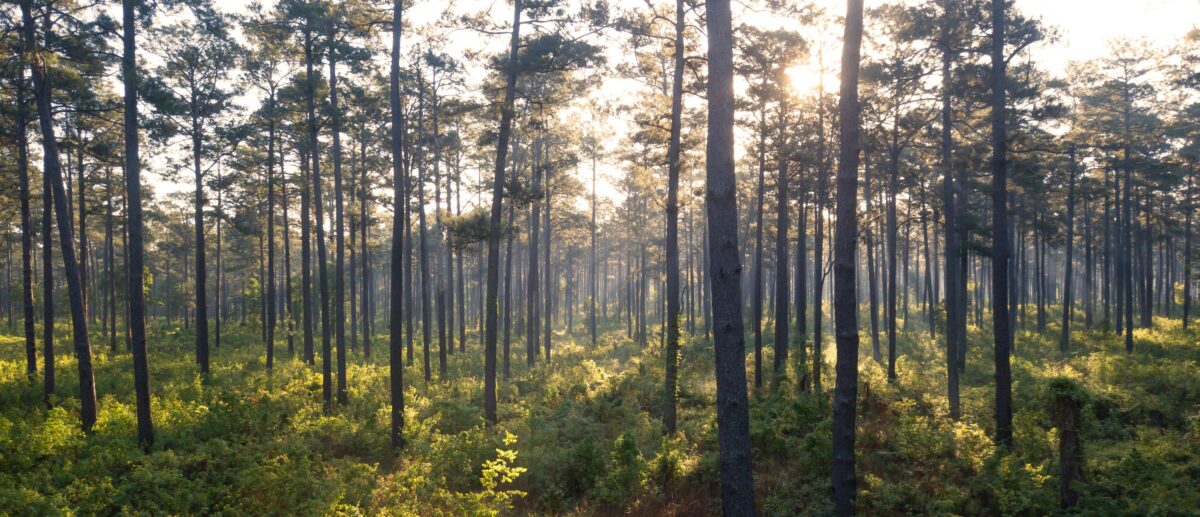
Global Biodiversity Center
If you are a CSU-affiliated researcher, fill out the form below to join the list!
CSU Biodiversity Researchers
Cameron Aldridge

Title: Professor
Department/Agency: Natural Resource Ecology Laboratory (NREL)
Email: cameron.aldridge@colostate.edu
Phone: 970-491-1927
Website: The Aldridge Lab
Research Interests: climate change, conservation genetics, ecosystems, endangered species, habitat loss and fragmentation, landscape ecology, policy
About: My lab is involved in research targeted at understanding animal-habitat relationships, with an emphasis on conservation and wildlife ecology. I am interested in addressing the effects of energy development, land-use change, and climate change on conserving wildlife populations, their habitats, and the ecosystems they inhabit. I work across spatial scales, and use statistical and empirical modeling in my research.
Lisa Angeloni
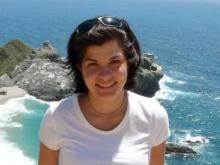
Title: Professor
Department/Agency: Biology
Email: angeloni@colostate.edu
Phone: 970-491-0562
Website: The Angeloni Lab
Research Interests: endangered species
About: I am broadly interested in behavioral ecology, including the evolution of behavior of fishes, the effects of human disturbance (including anthropogenic noise) on wildlife behavior, and the reproductive ecology of species of conservation concern.
Lise Aubry
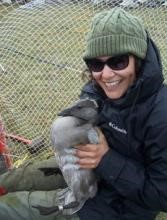
Title: Assistant Professor
Department/Agency: Fish, Wildlife, & Conservation Biology
Email: lise.aubry@colostate.edu
Phone: 970-491-5122
Website: The Aubry Lab
Research Interests: climate change, endangered species, habitat loss & fragmentation
About: I am originally from Southern France and received BS and MSc degrees from the Universite Paul Sabatier in Toulouse. I conducted my dissertation work at the Max Plank Institute for demographic research in Germany, where I studied life history trade-offs and senescence in vertebrates. I then moved to Utah State University to pursue postdoctoral research with a focus on wildlife management and human-wildlife conflicts. I was appointed Assistant Professor in 2015 at Utah State University and expanded my research program to include climate change impacts on wildlife. I moved to Colorado State University in 2017 and look forward to establishing my research program in Colorado, with some new projects outlined below.
Specific Research Interests: I am a population ecologist interested in how wildlife responds to anthropogenic change. The three primary themes of our research include: 1) quantifying the impacts of anthropogenic factors on the demography and micro-evolution of wild populations; 2) Studying the demographic and physiological processes that mediate variation in individual responses to environmental change and how those scale up to affect populations and communities; 3) understanding and predicting how wild populations respond to management actions and conservation practices.
Research Projects
Spatio-temporal dynamics of human-black bear conflicts
Description: Using long-term information on spatially-explicit complaints, capture-mark-recapture, and habitat use in black bears, we hope to identify the causes and consequences of human-bear conflicts along an anthropogenic gradient. We will quantify the relative contributions of food subsidies, urbanization, and management regulations in shaping the dynamic interactions that exist between humans and black bears in the state of New Jersey, which carries the highest coupled densities of black bear and humans in the continental US.
Location: Northwestern New Jersey
Website: Aubry Lab Projects
Citations:
Raithel J.D, Reynolds-Hogland M., Koons D.N., Carr P. and L.M. Aubry (2016). Recreational harvest and incident-response protocols reduce human-carnivore conflicts in an anthropogenic landscape. Journal of Applied Ecology. doi:10.1111/1365-2664.12830.
Raithel J.D., Reynolds-Hogland M., Carr P., and L.M. Aubry. Why Does the Regulated Harvest of Black Bears Affect the Rate of Human-Bear Conflicts in New Jersey? Case Study in the Environment, 1
Project Map
Integrated conservation of the Colorado checkered whiptail
Description: The Colorado checkered whiptail (COCW) has greatly declined throughout most of its range as a result of urbanization and conversion of habitat to agricultural uses. Very little is known about the physiology and demography of COCW that still persist today. Given the uncertainty behind COCW population status, distribution, and the impacts of military readiness activities on their demography and stress levels, this project and its results will provide the Fort Carson Conservation Branch with an understand of how abundant COCW are within the different sub-populations, how they are distributed across the landscape, how military activity may impact individuals and populations, and the influence of such activities on COCW physiological stress and fitness. Most importantly, the proposed study will lay the foundation for the monitoring of COCW in future years and guide Fort Carson’s management of this species.
Location: Fort Carson and Pinion Canyon Maneuvering Site, Department of Defense Lands
Website: Aubry Lab Projects
Project Map
Larissa Bailey
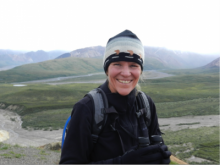
Title: Associate Professor
Department/Agency: Fish, Wildlife, & Conservation Biology
Email: larissa.bailey@colostate.edu
Phone: 970-492-4084
Website: The Bailey Lab
Research Interests: climate change, ecosystems, endangered species, habitat loss & fragmentation, and landscape ecology
About: As a quantitative ecologist, my research often applies to a wide variety of taxa, and generally focuses on ways of measuring and monitoring biological systems to increase our scientific understanding and improve management decisions. My research involves developing and implementing methods to estimate common state variables used to explore changes in animal communities; namely, population size and species distribution and the vital rates responsible for changes in these state variables. I am particularly interested in factors influencing amphibian and reptile systems, including disease, invasive species and habitat change (loss or fragmentation of aquatic and terrestrial habitats). In addition to basic and applied scientific questions, I also dabble in integrating science into conservation decision making (i.e., decision theory).
Specific Research Interests: My research involves developing and implementing methods to estimate common state variables used to explore changes in animal communities; namely, population size and species distribution and the vital rates responsible for changes in these state variables.
Research Projects
Southern Rocky Mountain Boreal toads
Description: This is a collection of projects aimed at understanding factors influencing population and distributional dynamics of the state-endangered, and federally petitioned, Boreal Toad (Anaxyrus [Bufo] boreas boreas). Projects include: (1) Investigating factors influencing Boreal Toad and disease dynamics (2) Assessing the impact of introduced, endangered cutthroat trout on boreal toad breeding success and recruitment (3) Estimating survival of reintroduced tadpoles and evaluating short-term success of reintroduction efforts (4) Using a structured decision making approach to revise recovery objectives and evaluate potential management actions for endangered amphibians.
Location: Southern Rocky Mountains, including southern Wyoming, mountainous regions of Colorado, and northern New Mexico
Website: Bailey Lab Projects
Project Map
Description: Approximately 60% of the native terrestrial reptile species found in the Great are listed as state endangered, threatened, or in need of conservation; however, basic information on species distribution is often lacking. Future conservation of native reptiles will depend largely on our understanding of environmental and biological factors that most influence distributions and persistence of native reptiles and our ability to effectively assess trends in their populations over time. Danny Martin, a PhD student at CSU, is assessing factors influencing historic and contemporary reptile distributions, and evaluating various survey methods to develop a comprehensive, volunteer-based monitoring program for these species.
Location: The U.S. Great Plains
Project Map
Edward Barbier
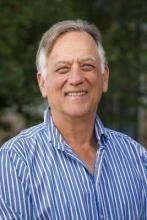
Title: Professor
Department/Agency: Economics
Email: edward.barbier@colostate.edu
Phone: 970-491-3321
Website: Barbier Website
Research Interests: policy
About: Edward B. Barbier is a Professor in the Department of Economics, Colorado State University and a Senior Scholar in the School of Global Environmental Sustainability. His main expertise is natural resource and development economics as well as the interface between economics and ecology. He has consulted for a variety of national, international and non-governmental agencies, including many UN organizations, the World Bank and the OECD. He has authored over 300 peer-reviewed journal articles and book chapters, written or edited 23 books, and published in popular journals. Barbier is a Fellow of the Association of Environmental and Resource Economists and is consistently ranked among the top cited environmental economists globally. Google Scholar lists him as currently having over 47,000 citations, including over 18,000 since 2013.
Specific Research Interests: Environmental and resource economics; natural resources and development; economics of ecosystem services and biodiversity
Research Projects
How to pay for saving global biodiversity
Description: Our article supports current efforts at the CBD to extend the Aichi biodiversity targets to the 50% conservation goal, and also for the COP to develop a new biodiversity pact along the lines of the Paris Climate Change Agreement. However, we go further and suggest that the new agreement also consider developing a formal mechanism to allow corporations and other non-state actors with a stake in biodiversity conservation to participate in any agreement established by the COP. We consider private sector involvement especially important for closing the chronic funding gap for financial and technical assistance for developing countries.
Citations:
Barbier, E.B., J.C. Burgess and T.J. Dean. 2018. “How to pay for saving biodiversity.” Science 360 (6388): 486-488. DOI: 10.1126/science.aar3454
Joel Berger
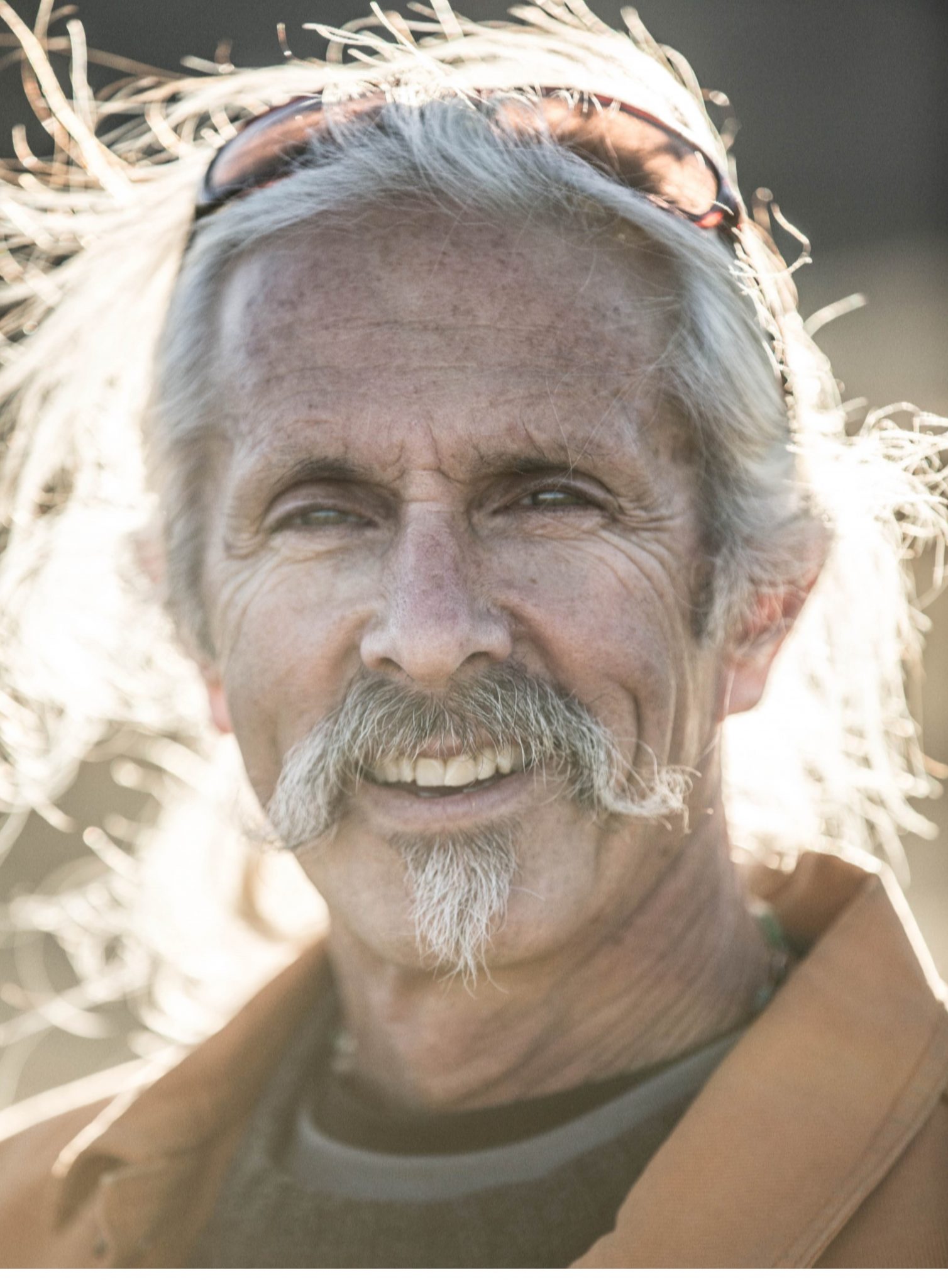
Title: Cox Chair of Conservation Biology
Department/Agency: Fish, Wildlife, & Conservation Biology
Email: jberger@wcs.org
Phone: 970-491-5020
Website: The Berger Lab
Research Interests: climate change, ecosystems, endangered species, policy
About: I work both as a CSU professor and as a senior scientist for the New York-based Wildlife Conservation Society. Most work is 1) thematic – long-distance migration, climate impacts, and novelty in predator-prey relationships in the context of food webs; 2) set in North America, Arctic, Asia, and Africa; and 3) with mammals larger than a bread box. I note that conservation cannot be done in the absence of people, and have used science as a form of diplomacy to build bridges between protected areas and those not by uniting fieldwork and people in Bhutan, on the Tibetan Plateau, and in the Asian and American Arctic as well as in the heart of the American West – the Rocky Mountains. I’ve been a recipient of several Guggenheim and NSF awards, am an elected fellow of the American Association for the Advancement of Sciences, have twice been a finalist for the Indianapolis Prize, and honored with lifetime achievement awards by the Society of Conservation Biology and American Society of Mammalogists. In addition to four books and an edited volume, a new book will be published in 2017, Extreme Conservation – Contesting Species Extinctions at the Edges of the World.
Specific Research Interests: I often take a pragmatic approach to science and conservation by asking ‘how to’ or ‘what if’ questions, with a focus on: a) how we might we assure long distance migrations beyond the boundaries of protected areas? B) factors likely to affect the short- and long-term persistence of Arctic and cold-adapted species of high elevation, species such as muskoxen, mountain goats, and wild yaks? C) approaches that will incentivize local herders and semi-nomads in central Asia to reduce their herd sizes of domestic stock because these affect the global trade of cashmere and core areas designed to protect endangered species like wild yaks and snow leopards and the lesser known kiang, khulan, and saiga, and 4) novelty in prey-predator relationships because of the movement of species due to climate or humans.
Research Projects
Novelty in prey-predator relationships in the Arctic
Description: This project is addressing both direct and indirect consequences of climate alteration and human manipulations of sex ratios on the potential persistence of the Arctic’s largest land mammal. Different components include 1) establishing ecological baselines both in the Alaskan and the Russian Arctic on individual growth rates (e. g. body size change) through non-invasive monitoring, 2) understanding the extent to which polar bear predation shapes future prospects for muskoxen persistence, and 3) variation in muskoxen responses to brown bear and polar bear possible predation.
Location: Beringia –Russia and USA (Chukotka and Alaska)
Citations:
Berger, J. In Press. Science and challenge to conserve large wild mammals in 21st Century American Protected Areas. In, Science for Parks and Parks for Science, (ed. S. Beissinger), University of Chicago Press. Berger, J. 2012. Estimation of body-size traits by photogrammetry in large mammals to inform conservation. Conservation Biology 26:769-777.
Projects Map
Climate and challenge in a cold-adapted obligate
Description: The project has funded Wesley Sarmento’s and my work to understand what drives the distribution of mountain goats in areas where glacial recession has been rapid. Goats may be using certain habitats because human provide a buffer against predation, because humans provide nutritional subsidies, or because of altered plant communities due to warming temperatures.
Location: Glacier National Park, Montana
Projects Map
Description: Climate is changing more rapidly in the Arctic than elsewhere. The sole obligate Arctic ungulate are muskoxen, but it has been unclear the extent to which climate or other drivers (if any) may threaten the persistence of muskoxen. Current efforts _ in year 6 _ are designed to examine how harvest of males, extreme climate events, and predation may interact to render populations susceptible to collapse. A program is also operating in association with Russian scientists on the Wrangel Island Zapovednic to develop ecological baselines using non-invasive photogrammetry.
Location: Russian/Alaskan Arctic
Project Map
Description: The plight of white and black rhinos led several African nations to try radical conservation tactics _ dehorning. My team and I developed a program that involved field studies, simple economic analyses, and local people to evaluate the efficacy of dehorning. While controversial, our scientifically-grounded empirical work altered government policy and resulted in the cessation of dehorning as a practice for more than a decade.
Location: Namibia
Projects Map
Cashmere markets and decline of large mammals
Description: The demand for cashmere as a fashion in the West is infusing incentives to produce more cashmere and this is resulting in an increase of goat herding by pastoralists across remote areas of Central Asia. While this is helping herders accrue more monies it is also affecting iconic and endangered large mammals such as wild yaks, kulan and kyang, saiga, and snow leopards. The challenges to maintaining human livelihoods yet protecting these rare species are enormous. My colleagues and I are trying to address these issues.
Location: Mongolia
Projects Map
In situ and ex situ conservation
Description: The world’s most northern antelope is the endangered saiga. A recent controversial challenge in Mongolia involved whether to develop a captive propagation center or to invest funds into in situ conservation. Our efforts with Mongolian biologists resulted population estimates in the wild to demonstrate that saiga were more abundant than had been presumed, and there was no need to concentrate on far more expensive ex situ practices. Mongolian Academy of Science biologists were sponsored for a training workshop in the USA on modern techniques to estimate population abundance. These are now the standard to estimate population sizes of some wildlife species. Further, we will be seeking ways to develop strategies to enhance future herder lifestyles while addressing negative effects of the growing cashmere trade (e. g. proliferation of domestic goats) on Central Asian large mammals; this involves engagement with the garment industry and local government.
Location: Mongolia
Projects Map
Advising and fieldwork to conserve Takin and Wild yak
Description: In winter 2012, by invitation of the Bhutan government, we instigated a field program on behalf of a Bhutanese PhD student at the Ugyen Wangcuk Institute for Conservation and Environment a first ever radio-collaring project designed to garner information on the status of Bhutanes national mammal, the takin. Fieldwork and advising has since continued and, as we learn more, a Bhutanese-led national conservation strategy will be developed.Following on the heels of pioneering efforts by Dr. George Schaller and Dr. Aili Kang, colleagues and I have been advising, helping to structure, and participating in field programs on the Tibetan Plateau to enhance conservation of wild yaks. We are working at local and national levels to facilitate science-based on-the-ground conservation practices.
Location: Bhutan
Projects Map
Protecting migration corridors and policy change
Description: The long distance migrations of land mammals have collapsed globally. Our efforts in the Teton region of the Greater Yellowstone resulted in the USA’s 1st federally protected migration corridor, an area about 70 kms long and 2 kms wide. It is known colloquially as “Path of the Pronghorn” and featured in numerous books, by National Geographic and by Smithsonian Magazines, in the science journal, Nature, and elsewhere.
Location: Greater Yellowstone Ecosystem
Projects Map
Cynthia Brown
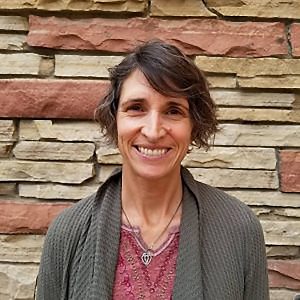
Title: Professor
Department/Agency: Bioagricultural Sciences & Pest Management
Email: cynthia.s.brown@colostate.edu
Phone: 970-491-1949
Research Interests: climate change, invasive species
About: I attended graduate school at University of California, Davis, where I studied the restoration of California’s native prairies on roadsides after construction. The objectives of my research included designing communities that would minimize competition among their members, while maximizing resistance to invasion through complementary patterns of resource use. I conducted postdoctoral research at University of Minnesota, where I focused on mechanisms of invasion into tallgrass prairie. I came to Colorado State University in July of 2002. I have continued to study biological invasions and restoration ecology and am developing expertise in sustainability science.
Specific Research Interests: I am interested in the mechanisms that control the coexistence of plants and the effects of species diversity and plant community composition on ecosystem characteristics such as productivity, resource abundance, and invasibility. My past work on community assembly and restoration ecology reflects this interest. My lab’s current research includes studies of invasive plant seed dispersal, plant invasions and restoration in prairie, steppe and montane systems, and the effects of global environmental change on plant invasions. We strive to conduct research that tests ecological theory while addressing practical conservation and management issues.
Research Projects
Post-fire plant invasions at Rocky Mountain National Park
Location: Colorado, U.S.A.
Projects Map
Roadside restoration in Rocky Mountain National Park
Location: Colorado, U.S.A.
Projects Map
Location: Colorado, U.S.A.
Project Map
Patrick Byrne

Title: Professor
Department/Agency: Soil & Crop Sciences
Email: patrick.byrne@colostate.edu
Phone: 970-491-6985
Research Interests: climate change, conservation genetics
About: My program is interested in the characterization and utilization of genetic diversity in plants to improve yield, stress tolerance, and quality of crops. At CSU my work focuses on wheat, but also includes common bean and Brassica oilseed crops (canola, camelina). More specifically, my research applies quantitative and molecular genetics to detect the chromosome regions and explain the mechanisms that influence variation in economic traits. I have also been involved in a number of projects to evaluate the benefits and risks of genetically engineered crops. Prior to joining CSU in 1997, I spent 10 years with international agriculture development agencies in Nepal, the Cape Verde Islands, and Mexico, and 5 years with USDA-ARS in Columbia, Missouri.
Specific Research Interests: Characterizing and utilizing biodiversity in crop improvement Detecting genes or chromosome regions that control trait variation Evaluating storage methods for crop seed conservation.
Philip Cafaro
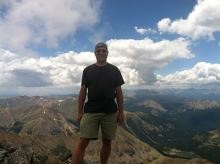
Title: Professor
Department/Agency: Philosophy
Email: philip.cafaro@colostate.edu
Phone: 970-491-2061
Research Interests: climate change, endangered species, policy
About: I’m a professor of philosophy at Colorado State University and an affiliated faculty member with CSU’s School of Global Environmental Sustainability. A former ranger with the U.S. National Park Service, my main research interests are in environmental ethics, consumption and population issues, wild lands preservation, and the creation of sustainable societies that respect limits to growth. I’m the author of “Thoreau’s Living Ethics” and co-editor of the anthology “Life on the Brink: Environmentalists Confront Overpopulation,” both from University of Georgia Press, and of the forthcoming “How Many Is Too Many? The Progressive Argument for Reducing Immigration into the United States.” I’ve lobbied Congress on behalf of the Wilderness Society and the Massachusetts and Colorado state legislatures on behalf of the Sierra Club, and co-wrote the proposal to designate the Cache la Poudre River through Fort Collins an Audubon Society Important Bird Area. I’m currently President of the International Society for Environmental Ethics.
Specific Research Interests: Global climate change; biodiversity preservation; global and US population policy; consumption, overconsumption and human well-being; alternatives to the endless growth economy; human character as it relates to ecological sustainability.
Kevin Crooks

Title: Professor
Department/Agency: Fish, Wildlife, & Conservation Biology
Email: kevin.crooks@colostate.edu
Phone: 970-491-7936
Research Interests: endangered species, habitat loss and fragmentation, landscape ecology
About: I am a Professor in the Department of Fish, Wildlife, and Conservation Biology and the Graduate Degree Program in Ecology at Colorado State University. I received my B.S. in Zoology at CSU, my M.S. in Ecology at the University of California Davis, and my Ph.D. in Biology at the University of California Santa Cruz. I was an Assistant Professor in the Department of Wildlife Ecology at the University of Wisconsin Madison before returning to CSU in 2003.
Specific Research Interests: In our lab, we strive to apply theoretical principles of ecology, behavior, and conservation science to natural systems. We use a combination of field observations, field and laboratory experiments, and modeling techniques to answer specific questions generated by observing natural systems. My research has emphasized the ecology and conservation of mammals, often focusing on carnivores due to their sensitivities to environmental disturbances. I do not feel limited, however, to the study of any specific taxon. Rather, we strive to ask and answer interesting scientific questions that help promote the conservation of biological diversity. Because of my commitment to, and passion for, conservation, much of my research, and that of my lab, examines the impacts of anthropogenic disturbances on the natural world. One primary research avenue is continued investigation of the effects of habitat fragmentation, urban sprawl, and landscape connectivity on wildlife and the systems in which they live.
Research Projects
Impacts of landscape structure, host demography, and management interventions on disease dynamics
Description: How does disease spread in large predators across an ecosystem? How does the structure of a landscape impact disease spread? And how does wildlife management affect the spread of disease? The FELIDAE (Feline Ecology: Landscapes, Infectious Disease, And Epidemics) research project, funded by the NSF-Ecology of Infectious Diseases Program (NSF-EID 0723676; 1413925), seeks to shed light on these questions. Our mission is to understand the ecology of infectious diseases in wild and domestic felids to inform policies that minimize disease outbreaks in wildlife, domestic animals, and humans.
Location: Colorado, U.S.A.
Website: The Felidae Project
Projects Map
Description: A team of scientists and educators, working together to understand the effects of noise and light pollution on ecological processes, educate the public about the importance of sound and light in the everyday lives of organisms including ourselves, and preserve the natural sounds and night skies of the world.
Location: Colorado, U.S.A.
Website: Sound & Light Ecology Team
Projects Map
Remote camera K-12 outreach program
Description: As part of the NSF-EID FELIDAE project and a Monfort Professorship at Colorado State University, I have helped develop an educational outreach effort to conduct remote camera surveys for wildlife in local Fort Collins natural areas in collaboration with K-12 schools in the Poudre School District. This project is a collaborative effort between Colorado State University, the City of Fort Collins Natural Areas Program, The Rocky Mountain Cat Conservancy, The National Parks Service Natural Sounds Lab, and the CSU Student Chapter of The Wildlife Society.
Location: Colorado, U.S.A.
Website: TWS Camera Trap Project
Project Map
Tom Dean

Title: Professor of Entrepreneurship and Sustainable Enterprise
Department/Agency: Department of Management
Email: tom.dean@colostate.edu
Phone: 970-491-7266
Research Interests: climate change, ecosystems, habitat loss and fragmentation, policy
About: Thomas J. Dean is the Kemble Family Fellow and Professor of Entrepreneurship and Sustainable Enterprise in the College of Business and School of Global Environmental Sustainability at Colorado State University. A pioneer in the field of sustainable and environmental entrepreneurship, he authored the first environmental entrepreneurship course in 2001, won accolades for his rigorous theoretical examination of environmental entrepreneurship in 2007, and published the first textbook on sustainable venturing in 2013 (Sustainable Venturing: Entrepreneurial Opportunity in the Transition to a Sustainable Economy). His research, teaching, and executive consulting focus on business strategies and economic opportunities present in emerging social and environmental trends. Professor Dean also led nationally regarded and top-ranked entrepreneurship and sustainable enterprise programs at the University of Tennessee, the University of Colorado, and Colorado State University, including a third place national ranking in social entrepreneurship for CSU’s MBA program. During his tenure at the University of Colorado, Professor Dean led the Deming Center for Entrepreneurship in his role as Academic Director. While at the University of Colorado, he founded the nationally ranked Sustainable Venturing Initiative, the Sustainable Opportunities Summit, and the Cleantech Venture Challenge. He also co-founded the Sustainability, Ethics, and Entrepreneurship Conference, an international conference focused on research at the intersection of entrepreneurship, sustainability, and ethics. Professor Dean teaches in CSU’s Global, Social, and Sustainable Enterprise MBA Program and has consulted with numerous companies and start-ups. He previously served as Chair of the Entrepreneurship Division of the Academy of Management and received the Dr. Alfred N. and Lynn Manos Page Prize for Sustainability Issues in Business Curricula. He has published over sixty manuscripts and book chapters including articles in journals such as Science, Academy of Management Journal, Strategic Management Journal, Journal of Environmental Economics and Management, Journal of Management, and Journal of Business Venturing. Google Scholar lists Professor Dean as having over 4,500 citations of his work. Professor Dean holds a B.S. degree in Environmental Management from Penn State University, an M.B.A. from Oklahoma State University, and a Ph.D. in Strategic Management from the University of Colorado.
Citations:
Barbier, E. B., Burgess, J. C., & Dean, T.J. 2018. How to Pay for Saving Biodiversity: Can Private Sector Involvement in a Global Agreement Help to Conserve Global Biodiversity? Science, 360: 6388: 486-488. May 4.
Dean, T., & Sarason, Y. Lost Battles, Trojan Horses, Open Gates, and Wars Won: A Structuration View of Sustainable Entrepreneurship. In second review, Academy of Management Perspectives.
Dean, T. J. & McMullen, J. 2007. Toward a Theory of Sustainable Entrepreneurship: Reducing Environmental Degradation through Entrepreneurial Action. Journal of Business Venturing. 22(1): 50-76.
Colleen Duncan
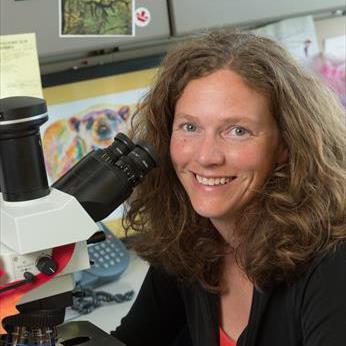
Title: Associate Professor
Department/Agency: Microbiology, Immunology, & Pathology
Email: colleen.duncan@colostate.edu
Phone: 970-297-4103
Research Interests: endangered species, habitat loss and fragmentation, landscape ecology
About: I’m a veterinarian with advanced training in both epidemiology and anatomic pathology. I’m employed as a diagnostic pathologist at the CSU veterinary diagnostic laboratory and I enjoy working on all species as well as teaching veterinary students.
Specific Research Interests: My research program is has largely developed as an extension of my role as a diagnostician. I’ve been fortunate to work with great collaborators investigating health issues in a variety of species, predominantly marine mammals and other wildlife. I’m particularly interested in understanding the cumulative effects of multiple stressors on the health of wild animal populations.
Research Projects
Reproductive health in northern fur seals
Description: The northern fur seal has undergone significant population declines and no cause has been identified. Working closely with the Alaska Ecosystems Program at NOAA, we are investigating infectious and toxicological factors that could impact reproductive health in this species.
Location: St. Paul Island, Alaska, U.S.A.
Projects Map
Steven Fonte
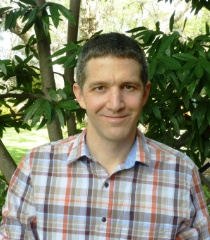
Title: Associate Professor
Department/Agency: Soil and Crop Sciences
Email: steven.fonte@colostate.edu
Phone: 970-491-3410
Research Interests: climate change, ecosystems
About: I am an ecologist with a broad focus on agricultural systems and soils. I aim to work closely with farmers and other stakeholders around the world so as to conduct relevant and broadly applicable research that meets diverse societal needs, addresses critical issues of global change, and contributes to the long-term productivity and resilience of agroecosystems.
Specific Research Interests: My research takes ecological approach towards understanding multiple functions and drives within agroecosystems and then applying this knowledge towards the sustainable management of soils and farming systems worldwide. I have worked extensively with earthworms and other soil macrofauna as both indicators and regulators of soil-based ecosystem services.
Research Projects
Diversification of Andean agroecosystems within plots and farmscapes
Location: Peru, Bolivia, Ecuador
Website: Fonte Project Website
Projects Map
W. Chris Funk, GBC Director

Title: Professor
Department/Agency: Biology
Email: chris.funk@colostate.edu
Phone: 970-491-3289
Website: The Funk Lab
Research Interests: climate change, conservation genetics, endangered species
About: My research is at the interface of evolution, ecology, genomics, and conservation. In the most general sense, I investigate the evolutionary and ecological mechanisms that generate and maintain biodiversity by combining population genomics, experimental manipulations, and field studies. More specifically, my current research focuses on three fundamental questions in evolutionary ecology related to gene flow, an evolutionary force that plays a central role in the origin and persistence of biodiversity. First, what factors restrict gene flow, thereby causing populations to diverge into distinct, reproductively isolated species? Second, what effect does gene flow have on local adaptation, fitness, and population dynamics? Third, how do real-world landscapes affect patterns and rates of gene flow?
In addition to my interest in basic questions in evolutionary ecology, an important part of my research program applies population genetic concepts and new genomic tools to address conservation questions. Population genetics and genomics are invaluable in conservation and management for the delineation of conservation units, determining patterns of genetic connectivity across landscapes, and assessing the status and viability of threatened species. A major focus of my research program is the application of population genetics and genomics to address critical questions for biodiversity conservation.
Specific Research Interests: Conservation genomics, evolutionary ecology
Research Projects
Description: Predicting the consequences of rapid climate change for biodiversity loss and ecosystem function is an urgent scientific challenge. This project, which we call “EvoTRAC” (Evolutionary and Ecological Variability in Organismal Trait Response with Altitude and Climate), will experimentally quantify mechanisms of species and ecosystem sensitivity to warming and increased variation in precipitation, using small streams in the Colorado Rockies and the Ecuadorian Andes as study systems.
Location: Ecuador
Projects Map
Description: This project tests the effects of gene flow, the movement of genes from one population to another by immigrants, on local adaptation and population dynamics in Trinidadian guppies.
Location: Trinidad
Projects Map
California Channel Islands conservation genomics and rediscovery
Description: The Funk Lab increasingly uses genomic approaches to address conservation questions. Currently, our main conservation genomics research focuses on three species on the California Channel Islands: the Island Fox (Urocyon littoralis; listed as Endangered under the U.S. Endangered Species Act [ESA]); the Island Night Lizard (Xantusia riversiana); and the Pacific Chorus Frog (Pseudacris regilla). For all three species, we are using genomic data to characterize population structure at neutral and adaptive loci; estimate effective population sizes; and test for changes in population sizes associated with dramatic changes in habitat on the Channel Islands caused by invasive herbivores and plants and subsequent restoration of the islands by removing these non-native herbivores and plants.
Location: Channel Islands, California, U.S.A.
Website: Funk Project Website
Projects Map
Tailed frog landscape phenomics
Description: One of the most important scientific challenges of the 21st century is predicting the effects of climate change on biodiversity. Although climate change has already negatively impacted biodiversity, our capacity to predict which species and populations are most vulnerable remains poor. The goal of this project is to uncover rules for spatial patterns of vulnerability to climate change using an integrative framework that links environmental heterogeneity to genetic and phenotypic variation in resilience traits, an approach we term landscape phenomics. We will use this framework to test a priori hypotheses regarding relative vulnerability across elevation in coastal tailed frogs (Ascaphus truei) and Rocky Mountain tailed frogs (A. montanus) in the U.S Pacific Northwest. Funk Lab PhD student Amanda Cicchino will lead the physiology and gene flow components of the project, and postdoc Brenna Forester will lead genomic analyses to quantify adaptive potential. Collaborators include Cameron Ghalambor (CSU), Jason Dunham (USGS Forest and Rangeland Ecosystem Science Center), and Erin Landguth (University of Montana). Click here to see NSF award abstract.
Location: Oregon, U.S.A.
Website: Funk Project Website
Projects Map
Kathleen Galvin
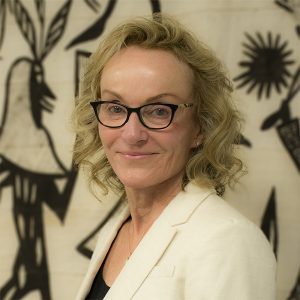
Title: Professor
Department/Agency: Anthropology
Email: kathleen.galvin@colostate.edu
Phone: 970-491-5784
Website: Galvin Homepage
Research Interests: climate change, ecosystems, habitat loss and fragmentation, policy
About: Trained as a biological anthropologist, she has conducted interdisciplinary social-ecological research in the drylands of Africa and for over 25 years. She is interested in issues of pastoral land use, conservation, climate variability and change, food security and resilience and adaptation strategies of people in the savannas. Her research explores local perceptions of climate change and environmental changes and viable solutions.
Cameron Ghalambor
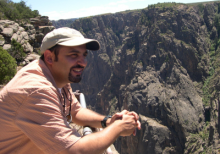
Title: Professor
Department/Agency: Biology
Email: cameron1@colostate.edu
Phone: 970-491-2759
Website: The Ghalambor Lab
Research Interests: climate change, invasive species
About: I am an evolutionary ecologist interested in the processes that lead to adaptive divergence. My research is focused on how abiotic and biotic factors in the environment drive plastic and genetic differences in morphological, behavioral, physiological, and life history traits.
Kate Huyvaert

Title: Professor
Department/Agency: Fish, Wildlife, & Conservation Biology
Email: kate.huyvaert@colostate.edu
Phone: 970-491-5520
Website: The Huyvaert Lab
Research Interests: climate change, endangered species, habitat loss & fragmentation, invasive species, landscape ecology
About: Research questions that we investigate in the Huyvaert lab group are typically about population- or individual-level problems in ecology. Our primary research focus is in wildlife disease ecology and we apply both field and laboratory techniques to questions about pathogens and parasites that affect host populations of wild animals. Our group also focus on the conservation of threatened and endangered species, especially tropical seabirds.
Specific Research Interests: Disease ecology, behavioral ecology and conservation of threatened and endangered species
Research Projects
Description: Until recently, the waved albatross were considered safe from extrinsic threats like fisheries mortality and other factors that threaten most other albatross species. However, the species was uplisted to “critically endangered” (IUCN 2012) motivated by observations of fisheries-related mortality, and declines in annual adult survival and breeding population size. This work was based on records of banded birds from a relatively large colony at Punta Cevallos on Española Island, Galápagos, Ecuador, the island where all but a few pairs of WVAL breed. While a known threat is posed via bycatch in artisanal fisheries at foraging areas off of Peru and Ecuador during the breeding season, other extrinsic factors, including disease or bycatch in other fisheries and other time periods, may be contributing to this long-lived species’ decline. We are working to contribute to filling gaps in our knowledge about a) disease threats, and b) population status of this critically endangered seabird.
Location: Galapagos Islands, Ecuador
Projects Map
Kelly Jones
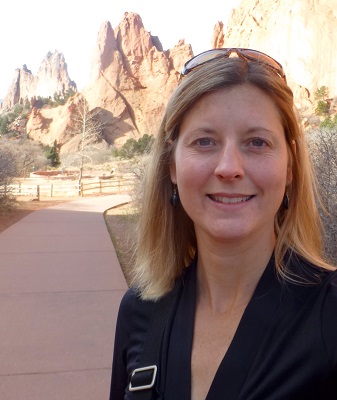
Title: Associate Professor
Department/Agency: Human Dimensions of Natural Resources
Email: kelly.jones@colostate.edu
Phone: 970-491-4175
Website: The Jones Lab
Research Interests: ecosystems, habitat loss & fragmentation, policy
About: My research focuses on the relationships between conservation governance, ecosystem services, and human wellbeing. I engage in interdisciplinary collaborations that combine ecological, economic and social science theory and methods to advance knowledge on the impacts of conservation governance. These interdisciplinary projects contribute to evidence-based conservation and ecosystem services science.
Specific Research Interests: Ecosystem services science; Land cover land use change science; Evidence based conservation; Impact evaluation; Payment for ecosystem services; Land tenure; Protected areas; Forest conservation; Water conservation
Research Projects
Community based natural resource management in Ethiopia
Description: A number of community based natural resources management (CBNRM) projects are being implemented around the buffer zone of protected areas in Ethiopia with the goals of alleviating pressure on resources and sustaining local livelihoods. Our project is working with local partners to assess how these CBNRM approaches are affecting social outcomes and conservation attitudes around Bale Mountains National Park. We are especially interested in how devolution of power and benefit sharing mechanisms are impacting local communities and natural resources management outcomes.
Location: Ethipoia
Projects Map
Description: This is a NSF Coupled Natural-Human Systems project made up of geospatial scientists, ecologists, hydrologists, sociologists and economists. We are: 1) assessing impacts of PES programs on social, economic and land use outcomes, 2) measuring tradeoffs across watershed services and other ecosystem services, and 3) building integrated models to run scenarios of future impacts on ecosystem services.
Location: Mexico
Citations: Asbjornsen, H., A. Mayer, K. Jones, T. Selfa, L. Saenz, R. Kolka, K. Halvorsen. 2015. “Assessing impacts of payments for watershed service on sustainability in coupled natural-human systems.” Bioscience 65: 579-591.
Projects Map
Description: A multidisciplinary social science team is working to provide empirical evidence on the impact of land titling and a national forest incentives program on deforestation in Ecuador. We are combining remote sensing analysis, quasi-experimental methods, and household surveys and interviews to better understand how these conservation approaches affect household behaviors.
Location: Ecuador
Citations: Jones, K.W., M.B. Holland, L. Naughton-Treves, M. Morales, L. Suarez, and K. Keelan. 2016. “Forest conservation incentives and deforestation in the Ecuadorian Amazon.” Environmental Conservation.
Projects Map
Return on investment of watershed partnership investments in Colorado
Description: A group of forest ecologists, hydrologists and economists are working with watershed partnerships in Colorado to build integrated modeling assessments of the impacts of forest restoration and wildfire mitigation practices on ecosystem service benefits.
Location: Colorado, U.S.A.
Projects Map
Yoichiro Kanno
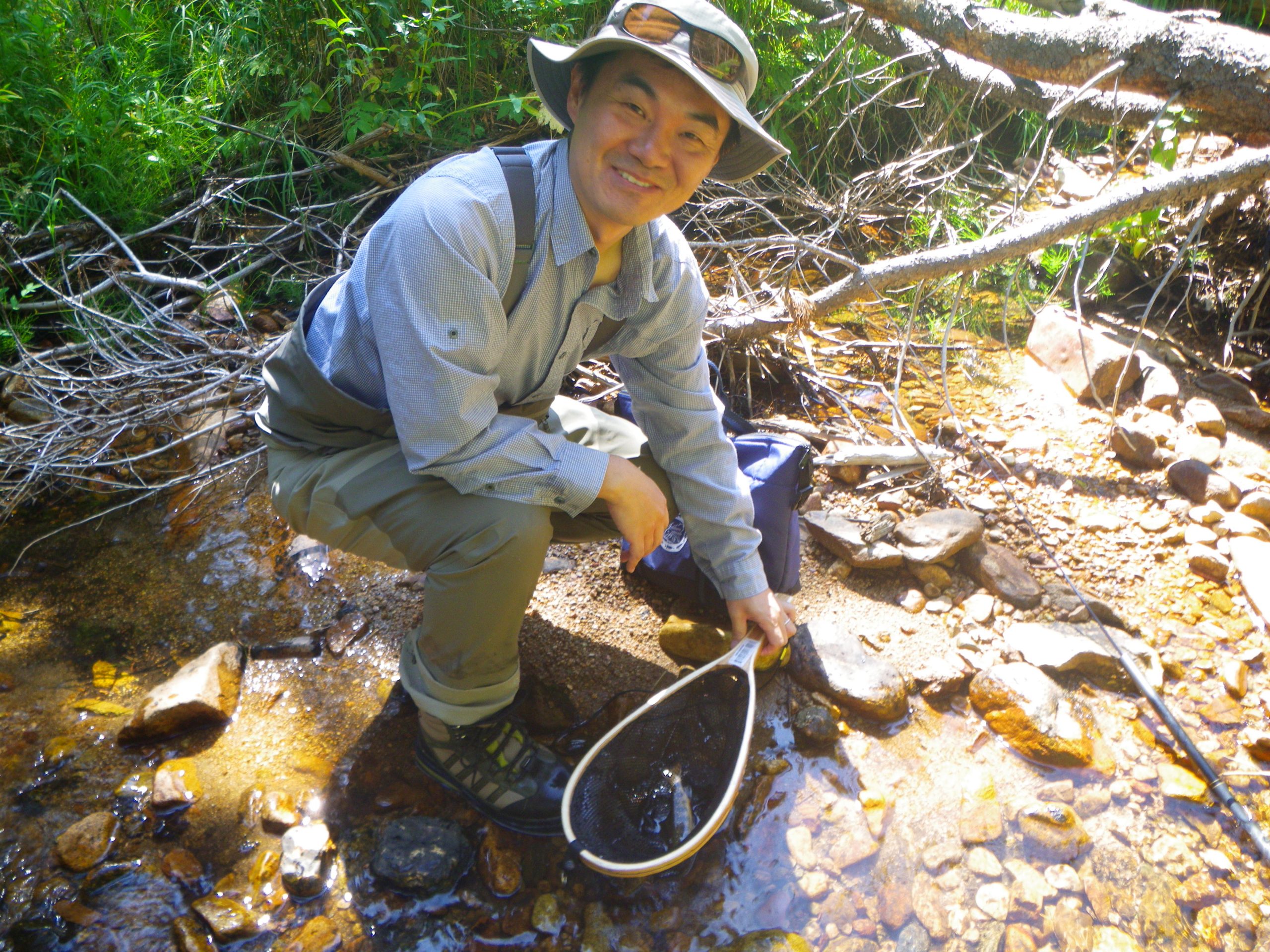
Title: Associate Professor
Department/Agency: Fish, Wildlife, and Conservation Biology
Email: yoichiro.kanno@colostate.edu
Phone: 970-491-5145
Website: Stream Fish Ecology and Conservation
Research Interests: Climate Change, Conservation Genetics, Endangered Species, Habitat Loss and Fragmentation, Invasive Species, Population Dynamics, Species Occurrence Dynamics, Quantitative Ecology
About: I am a stream fish ecologist studying populations and assemblages at multiple spatial and temporal scales. Much of my research is applied, providing scientific information useful for conservation and management of stream ecosystems that are often impacted by human activities and global change. My approach uses some combination of fieldwork, laboratory analyses and experiments, and advanced statistical analysis to understand intricate relationships among fish, the environment and people.
Specific Research Interests: Trout and salmon, riverscape ecology, coldwater conservation, water sustainability
Alan Knapp

Title: Professor
Department/Agency: Biology
Email: aknapp@colostate.edu
Phone: 970-491-7010
Website: The Knapp Lab
Research Interests: climate change, ecosystems
About: Knapp is a grassland ecosystem ecologist with primary research interests in how global change is affecting the structure and functioning of terrestrial ecosystems.
Sunil Kumar

Title: Research Scientist
Department/Agency: Natural Resource Ecology Laboratory (NREL)
Email: sunil.kumar@colostate.edu
Phone: 970-491-7056
Research Interests: climate change, endangered species, invasive species, landscape ecology
About: Sunil Kumar is a Research Scientist at Natural Resource Ecology Laboratory (NREL), and an Affiliate Faculty at the Department of Ecosystem Science and Sustainability, Colorado State University. His current research interests include species distribution modeling, pest risk analyses, effects of climate change on species distributions, and effects of habitat heterogeneity on native and invasive species. He uses ecological niche modeling, and geospatial (GIS and remote sensing) and statistical tools to assess the risk of harmful invasive species and quantify threats to agricultural biosecurity. He is also PI on a USDA funded project entitled “Pest risk analyses for temperate fruit flies in exported fruits”. He is currently advising MS and PhD students and co-taught “Niche Models” course at CSU.
Sunil grew up in northern India (Bijnor district) and earned BS in Mathematics (M.J.P. Rohailkhand University, Bareilly), and MS in Forest Ecology & Management from the Forest Research Institute (FRI) University, Dehradun (India). He was one of the first 30 Ford Foundation International Fellows (IFP-Fellow) from India (Cohort-1, 2001). He is a GDPE alumnus and received his PhD in Ecology in May 2007 from Colorado State University. Before coming to CSU in August 2002 he worked in India’s Central Himalayas for four years (1998-2002) in International Geosphere Biosphere Program (IGBP) project where he worked on the modeling and mapping of plant biodiversity. His PhD research was on quantifying the effects of landscape heterogeneity on native and exotic plants and butterfly diversity in Rocky Mountain National Park, Colorado, US.
Specific Research Interests: Ecological niche modeling, landscape ecology, species invasions, pest risk analysis, spatial ecology, geospatial analyses, remote sensing, GIS, spatial statistics, community ecology, and biomass modeling.
Research Projects
Location: Western U.S.A. and British Columbia, Canada
Citations: Kumar, S., Neven, L.G. and Yee, W.L. 2014. Assessing the Potential for Establishment of Western Cherry Fruit Fly (Rhagoletis indifferens) using Ecological Niche Modeling. Journal of Economic Entomology.
Projects Map
Predicting potential risk of spread of bat white-nose syndrome (WNS) in the United States
Location: Eastern U.S.A.
Citations: Flory, A., Kumar, S., Stohlgren, T. J., and Cryan, P. (2012). Environmental conditions associated with bat White-Nose Syndrome mortality in the north-eastern United States. Journal of Applied Ecology, 49: 680-689.
Projects Map
Location: Southern U.S.A.
Projects Map
Greg Newman

Title: Research Scientist
Department/Agency: Natural Resource Ecology Laboratory (NREL)
Email: gregory.newman@colostate.edu
Phone: 970-491-0410
Research Interests: endangered species, habitat loss & fragmentation, invasive species, landscape ecology, policy
About: I am a research scientist, ecologist, and informatics specialist at the Natural Resource Ecology Laboratory (NREL) at Colorado State University (CSU). I received my PhD from CSU in citizen science, community-based monitoring, and ecological informatics. My current research focuses on designing and evaluating the effectiveness of cyber-infrastructure support systems for citizen science programs. My research interests include evaluating various citizen science program models, understanding the socio-ecological benefits of engaging the public in scientific research, designing and evaluating data management systems for socio-ecological research, assessing the value of local and traditional ecological knowledge for conservation and education outcomes, and developing spatial-temporal decision support systems.
Specific Research Interests: Citizen Science, Socio-Ecological Systems (SES), local ecological knowledge, community based monitoring, community based natural resource management, collaborative conservation
Research Projects
Description: CitSci.org is a global support platform for citizen science projects. The platform currently supports 351+ projects globally – ranging from projects monitoring stream quality to maple syrup productivity to wildlife populations to invasive species – and has generated 636,535+ rigorous scientific observations. It is fully customizable to the extent that projects can define what they wish to measure, document how they measure it, and build customized datasheets for real-time data entry online and via mobile smartphone applications. The CitSci.org platform integrates a full suite of data exploration and visualization tools to empower people to create their own customized visualizations of trends, relationships, and comparisons. All data are automatically visualized on a variety of maps, and tools exist for volunteer management, communications, alerts/notifications, bulk uploading of legacy datasets, and download (export) of data in a variety of formats.
Location: Global
Citations:
Crall, A., G. Newman, D. M. Waller, T. J. Stohlgren, K. Holfelder, and J. Graham. 2011. Assessing Citizen Science Data Quality: An Invasive Species Case Study. Conservation Letters 4:433-442.
Crall, A. W., K. Holfelder, D. M. Waller, G. J. Newman, and J. Graham. 2012. The Impacts of an Invasive Species Citizen Science Training Program on Participant Attitudes, Behavior, and Science Literacy. Public Understanding of Science 22(6) 745–764.
Graham, J., G. Newman, C. Jarnevich, R. Shory, and T. J. Stohlgren. 2007. A global organism detection and monitoring system for non-native species. Ecological Informatics 2:177-183.
Newman, G., M. Chandler, M. Clyde, B. McGreavy, M. Haklay, H. Ballard, S. Gray, R. Scarpino, R. Hauptfeld, D. Mellor, and J. Gallo. 2016. Leveraging the power of place in citizen science for effective conservation decision making. Biological Conservation. Biological Conservation Available online 11 August 2016.
Newman, G., A. Crall, M. Laituri, J. Graham, T. J. Stohlgren, J. C. Moore, K. Kodrich, and K. Holfelder. 2010. Teaching citizen science skills online: Implications for invasive species training programs. Applied Environmental Education and Communication 9:276-286.
Newman, G., J. Graham, A. Crall, and M. Laituri. 2011. The art and science of multi-scale citizen science support. Ecological Informatics 6:217-227.
Newman, G., A. Wiggins, A. Crall, E. Graham, S. Newman, and K. Crowston. 2012. The future of citizen science: emerging technologies and shifting paradigms. Frontiers in Ecology and the Environment 10:298-304.
Newman, G., D. E. Zimmerman, A. Crall, M. Laituri, J. Graham, and L. Stapel. 2010. User friendly web mapping: Lessons from a citizen science website. International Journal of Geographical Information Science 24:1851-1869.
Wang, Y., N. Kaplan, G. Newman, and R. Scarpino. 2015. CitSc.org: A New Model for Managing, Documenting, and Sharing Citizen Science data. PLOS Biology October 22:1-5.
Projects Map
Barry Noon
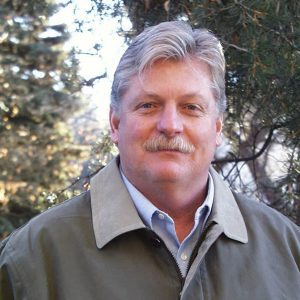
Title: Professor
Department/Agency: Fish, Wildlife, & Conservation Biology
Email: barry.noon@colostate.edu
Phone: 970-491-7905
Website: The Noon Lab
Research Interests: climate change, ecosystems, endangered species, habitat loss & fragmentation, landscape ecology, policy
About: In collaboration with my graduate students and post-docs, my research focuses on conservation planning for threatened and endangered species; science-based management of public lands to conserve biological diversity; population dynamics and viability analyses for at-risk species; and vertebrate demography and life history. For over three decades my research has emphasized the management of forest ecosystems to sustain biological diversity with a particular focus on spotted owls and other imperiled species. I also work extensively at the interface between science and policy formulation on public lands in the U.S including service on two federal advisory committees and a National Research Council panel. My teaching focuses on the application of quantitative methods to the design and analysis of ecological studies.
Paul Ode

Title: Professor
Department/Agency: Bioagricultural Science & Pest Management
Email: paul.ode@colostate.edu
Phone: 970-491-4127
Website: The Noon Lab
Research Interests: climate change, invasive species
About: In collaboration with my graduate students and post-docs, my research focuses on conservation planning for threatened and endangered species; science-based management of public lands to conserve biological diversity; population dynamics and viability analyses for at-risk species; and vertebrate demography and life history. For over three decades my research has emphasized the management of forest ecosystems to sustain biological diversity with a particular focus on spotted owls and other imperiled species. I also work extensively at the interface between science and policy formulation on public lands in the U.S including service on two federal advisory committees and a National Research Council panel. My teaching focuses on the application of quantitative methods to the design and analysis of ecological studies.
Liba Pejchar

Title: Associate Professor
Department/Agency: Fish, Wildlife, & Conservation Biology
Email: liba.pejchar@colostate.edu
Phone: 970-491-1819
Website: The Pejchar Lab
Research Interests: endangered species, habitat loss & fragmentation, invasive species, policy
About: Liba Pejchar is an Associate Professor and Conservation Scientist at Colorado State University. Her research focuses on protecting and restoring biodiversity and ecosystem function in the places where people live and work. Among other projects, she and her students study the conservation of Hawaiian honeycreepers, seed dispersal in New Zealand, bison reintroduction in Colorado and the effects of energy and housing development on birds and mammals.
Specific Research Interests: My specific research interests include: Extinction & recolonization in the Pacific Islands: implications for seed dispersal, conservation development, impacts of energy development on biodiversity and ecosystem services, ecological consequences of bison reintroduction in the American west, introduced species and food web dynamics, conservation biology of Hawaiian forest birds, and large-scale forest restoration: co-benefits for birds, pollinators and landowners.
Research Projects
Extinction & recolonization in the Pacific Islands: implications for seed dispersal
Description: The widespread loss and decline of frugivorous birds in the pacific islands has important consequences for ecological processes such as seed dispersal. In many places native frugivorous birds have been replaced by introduced species that may or may not fill the same role. Refaunation, the reintroduction or recovery of ecologically important species, has the potential to restore lost seed dispersal services. We are studying the linkages among the loss and refaunation of native and introduced frugivores and seed dispersal in both New Zealand and Hawaii.
Location: Pacific Islands, U.S.A.
Citations: Pejchar, L. (2015). Introduced birds incompletely replace seed dispersal by a native frugivore. AoB Plants doi: 10.1093/aobpla/plv072
Culliney, S., Pejchar, L., R. Switzer, and V. Ruiz-Gutierrez. (2012). Seed dispersal by a captive corvid: the role of the Alala (Corvus hawaiiensis) in shaping Hawaii’s plant communities. Ecological Applications 22:1718-1732.
Projects Map
Impacts of energy development on biodiversity and ecosystem services
Description: The American and global public is demanding clean, cheap and domestic energy while simultaneously increasing consumption. Wind energy is at the forefront of this energy transformation and is currently the fastest growing source of electrical power. Natural gas is also growing quickly as an alternative to other electric power sources such as coal and nuclear. Both of these energy sources have substantial social and environmental footprints, yet also contribute to human well-being. We are interested in quantifying and comparing the direct and indirect effects of wind energy development and natural gas development on biodiversity and ecosystem services across several ecoregions. One of the regions of particular interest to our lab group is the Piceance Basin in northwest Colorado, where mitigation for energy development-associated habitat loss for mule deer is actively underway. The mitigation is taking the form of tree reduction to enhance forage quality for this hunted species. Yet, the effects of this large-scale habitat manipulation on non-target bird and mammal communities is not well understood.
Location: Colorado, U.S.A.
Citations: Gallo, H.T. and L. Pejchar. (2016). Improving habitat for game animals has mixed consequences for biodiversity conservation. Biological Conservation 197:47-52.
Bombaci, S.P. and L. Pejchar. (2016). Consequences of pinyon and juniper woodland reduction for wildlife in North America. Forest Ecology and Management 365:34-50.
Jones, N. F., L. Pejchar & J. Kiesecker. (2015). The Energy Footprint: How Oil, Natural Gas, and Wind Energy Impact Land for Biodiversity and Ecosystem Services. BioScience DOI: 10.1093/biosci/biu224.
Jones, N.F. and L. Pejchar. (2013). Comparing the ecological impacts of wind and oil and gas development: a landscape scale assessment. PLoS ONE 8(11): e81391.
Projects Map
Conservation development: a win for developers, landowners & biodiversity?
Description: Conservation development is an approach to the design, construction and stewardship of a development that achieves functional protection of natural resources while also providing social and economic benefits to human communities. Such projects have been heralded as an environmentally friendly alternative to exurban sprawl as well as a mechanism for conservation finance. Yet although conservation development has been in use for more than three decades and continue to grow in popularity, little is known about whether conservation objectives have been achieved. Dr. Sarah Reed and I co-direct a working group housed at CSUs School of Global Environmental Sustainability Global Challenge Research Team on Conservation Development (www.cd.colostate.edu). We believe that this research is increasingly important in a world where low-density development threatens biodiversity and ecosystem services over vast regions of rural America and beyond.
Location: Colorado, U.S.A.
Citations: Pejchar, L., S. R. Reed, R. P. Bixler, L. Ex, & M. H. Mockrin. (2015). Consequences of residential development for biodiversity and human well-being. Frontiers in Ecology and the Environment 13(3): 146-153.
Feinberg, D.S., M. E. Hostetler, S. E. Reed, E. F. Pienaar, & L. Pejchar. (2015). Evaluating management strategies to enhance biodiversity in conservation developments: Perspectives from developers in Colorado, USA. Landscape and Urban Planning 136: 87-96.
Goad, E.H., L. Pejchar, S.E. Reed and R.L. Knight. (2014). Habitat use by mammals varies along an exurban development gradient in northern Colorado. Biological Conservation 176:172-182.
Hannum, C., S. Laposa, S.E. Reed, L. Pejchar and L. Ex. (2012). Comparative analysis of housing in conservation developments: Colorado Case Studies. Journal of Sustainable Real Estate 4: 149-176.
Reed, S. E., H. E. Kretser, M. J. Glennon, L. Pejchar & A. M. Merenlender. (2012). Faunal biodiversity at the urban-rural interface: current knowledge, research priorities, and planning strategies. Chapter 6 in D.N. Laband, B.G. Lockaby and W.C. Zipperer (editors) Urban-Rural Interfaces: Linking People and Nature. American Society of Agronomy, Madison, WI.
Pejchar, L., P.M. Morgan, M. Caldwell, C. Palmer & G.C. Daily. (2007). Evaluating the potential for conservation development: biophysical, economic & institutional perspectives. Conservation Biology 21: 69-78.
Hannum, C., S. Laposa, S.E. Reed, L. Pejchar and L. Ex. (2012). Comparative analysis of housing in conservation developments: Colorado Case Studies. Journal of Sustainable Real Estate 4: 149-176.
Projects Map
N. LeRoy Poff
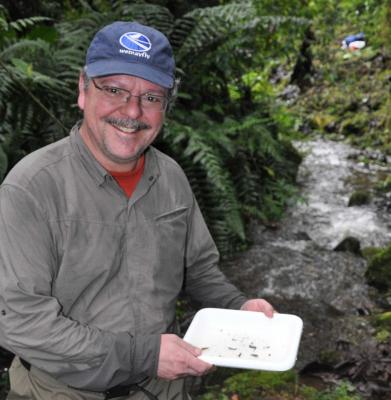
Title: Professor
Department/Agency: Biology
Email: poff@lamar.colostate.edu
Phone: 970-491-2079
Website: The Poff Lab
Research Interests: climate change, ecosystems, habitat loss & fragmentation
About: LeRoy Poff is a Professor in the Department of Biology and Director of the interdisciplinary Graduate Degree Program in Ecology at Colorado State University. He received his PhD in 1989 from CSU and was a research scientist at the University of Maryland and at Trout Unlimited until 1997, when he returned to CSU. His area of research is freshwater ecology, and he is particularly interested in the effects of human modification of natural hydrologic regimes on the stream and river ecosystems. He is internationally recognized as a leader in the arena of “environmental flows” and has given numerous keynote and plenary presentations in the U.S. and abroad. His work has been continuously funded for the last 20 years by numerous federal agencies, including the National Science Foundation, US Environmental Protection Agency, US Forest Service, US Bureau of Reclamation and US Geological Survey. He currently has active research projects in the Colorado and the western U.S., in Ecuador and in Australia. He has over 100 peer-reviewed publications and his work has been recognized by being a Highly Cited Researcher. He is former (elected) President of the Society of Freshwater Science, a 2005-2006 Monfort Professor at CSU, a 2010-2012 Professor Laureate in the College of Natural Sciences. He is also a Fellow in the Aldo Leopold Leadership Program of the Ecological Society of America and a (elected) Fellow of the American Association for the Advancement of Science.
Specific Research Interests: I am fundamentally interested in how environmental dynamics regulate species interactions and structure riverine communities at local to regional to global scales. By quantifying streamflow variation (disturbance) in ecologically meaningful terms, and using species (functional) traits as generalized, mechanistic response variables, I aim to better understand and predict responses of aquatic and riparian communities to natural and human-altered flow regimes, and to provide a scientific foundation for sustainable management of river flows.
• Conservation and restoration of riverine ecosystems. • Multi-scaled, hierarchical ecological organization in riverine ecosystems.
• Influence of hydrology and hydraulics on species interactions and riverine communities.
• Establishing environmental flows to support freshwater biodiversity and sustainability.
• Responses of and adaptation by riverine ecosystems to environmental alteration, including climate change.
Research Projects
Evolutionary and ecological variability in organismal trait response with altitude and climate
Description: The EVOTRAC (Evolutionary and Ecological Variability in Organismal Trait Response with Altitude and Climate) project will predict vulnerability of stream organisms to rapid climate change across latitudinal and elevational gradients by first understanding how temperature and disturbance shape stream biodiversity and function.
Location: Colorado, U.S.A. & Ecuador
Projects Map
Location: United States
Website: EVOTRAC Project
Projects Map
National Socio-Environmental Synthesis Center
Location: Colorado, U.S.A.
Website: SESYNC
Projects Map
Miranda Redmond
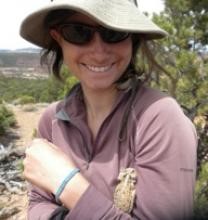
Title: Assistant Professor
Department/Agency: Forest & Rangeland Stewardship
Email: miranda.redmond@colostate.edu
Phone: 970-491-5775
Website: The Redmond Lab
Research Interests: climate change, ecosystems, invasive species, landscape ecology
Specific Research Interests: Our lab focuses researches the effects of climate and disturbances on forest and woodland dynamics so that as a society we can make more informed management decisions. We address this overarching goal by investigating questions such as: 1.) How do drought- and beetle-induced tree mortality and climate affect tree regeneration dynamics and what are the bottlenecks to tree regeneration? 2.) How will forest composition and structure shift across the landscape under a changing climate and following disturbances? 3.) What is the effect of fuel-reduction treatments on understory vegetation and forest structure and composition over both short (1-2 yr) and long (50 yr) time scales? Our approach to these questions integrates across multiple spatial scales, ranging from the individual tree-scale to broader regional scales, which has allowed us to ask plant population ecology questions at the landscape level. We use a variety of techniques including observational field surveys, geospatial analyses, dendrochronology, and experimental approaches.
Research Projects
Forest and woodland recovery following disturbances under a changing climate
Location: United States
Citations: Redmond MD, Weisberg PJ, Cobb NS, Clifford MJ. 2017. Woodland resilience to regional drought: Dominant controls on tree regeneration following overstorey mortality. Journal of Ecology 00:1-15. DOI: 10.1111/1365-2745
Redmond MD, Cobb NS, Clifford MJ and NN Barger. 2015. Woodland recovery following drought-induced tree mortality across an environmental stress gradient. Global Change Biology 21: 3685-3695.
Redmond MD, and NN Barger. 2013. Tree regeneration following drought and insect-induced mortality in piñon-juniper woodlands. New Phytologist.
Projects Map
Understory vegetation response to tree-removal treatments in pinyon-juniper woodlands
Location: Utah and Colorado, U.S.A.
Citations: Redmond MD, Cobb NS, Miller ME and NN Barger. 2013. Long term effects of chaining treatments on vegetation structure in piñon-juniper woodlands of the Colorado Plateau. Forest Ecology & Management 305: 120-128.
Redmond MD, Zelikova TJ and NN Barger. 2014. Limits to understory plant restoration following fuel-reduction treatments in a piñon-juniper woodland. Environmental Management 54: 1139-1152 . http://dx.doi.org/10.1007/s00267-014-0338-3
Redmond MD, Golden ES, Cobb NS, and NN Barger. 2014. Vegetation Management across Colorado Plateau BLM lands: 1950-2003. Rangeland Ecology and Management 67: 636-640. http://dx.doi.org/10.2111/REM-D-13-00171.1
Projects Map
Interacting effects of climate and landscape physiography on tree growth and cone production
Location: Colorado and New Mexico, U.S.A.
Citations: Kelsey KC, Redmond MD, Barger NN, Neff JC. 2017. Species, Climate and Landscape Physiography Drive Variable Growth Trends in Subalpine Forests. Ecosystems, 1-16. DOI: 10.1007/s10021-017-0139-7
Redmond MD, Kelsey KC, Urza AK, Barger NN. 2017. Interacting effects of climate and landscape physiography on piñon pine growth using an individual-based approach. Ecosphere 8: e01681. DOI: 10.1002/ecs2.1681
Redmond MD, Forcella F, and NN Barger. 2012. Declines in pinyon pine cone production associated with regional warming. Ecosphere 3: 120.
Projects Map
Meagan Schipanski
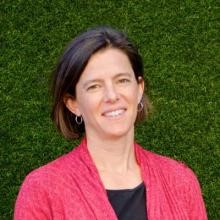
Title: Associate Professor
Department/Agency: Soil & Crop Sciences
Email: megan.schipanski@colostate.edu
Phone: 970-491-1320
Website: Meagan Schipanski
Research Interests: climate change, ecosystems
About: Our research group focuses on how shifting spatial and temporal plant diversity within agroecosystems influences multiple ecosystem functions. We primarily focus on nutrient cycling and organic matter dynamics within cropping systems from rhizosphere to global scales using on-farm, experiment station, greenhouse, and modeling experiments.
Andrew Seidl
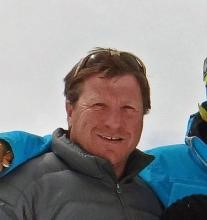
Title: Professor
Department/Agency: Agriculture & Resource Economics
Email: andrew.seidl@colostate.edu
Phone: 970-491-6951
Research Interests: climate change, ecosystems
About: Andrew Seidl has been Professor & Public Policy Specialist in the Department of Agricultural and Resource Economics at Colorado State University since 1997. Seidl works in communities that feature unique natural wealth to identify strategies for local people to use to improve management decisions, capture economic benefits and encourage environmental stewardship. Currently, Seidl is the Senior Technical Advisor to the Biodiversity Finance Initiative – primarily responsible for Malaysia, Indonesia, Fiji and Belize. From 2009-12, Seidl was Head, Global Economics Programme, International Union for Conservation of Nature (IUCN), based in Switzerland. Through Erasmus Mundus, Fulbright and other support, Seidl has been afforded opportunity to serve as a visiting scholar at the University of Trento, Italy, the University of Manchester, UK, Central European University, Hungary, and the Central American Institute for Business Administration (INCAE), Costa Rica, for example. Previously, Andy was Natural Resource Economist at the Brazilian Center for Agricultural Research in the Pantanal (CPAP-EMBRAPA) and Commodity Analyst at the Food and Agriculture Organization of the United Nations (FAO-UN) in Rome, Italy. Dr. Seidl holds a B.A. from the University of Wisconsin and Ph.D. from the University of Florida, USA.
Specific Research Interests: The economics of ecosystems and biodiversity (TEEB)
Research Projects
Conservation leadership through learning: Peru pod
Description: Six masters students from the Conservation Leadership Through Learning (CLTL) undertake research on REDD, REDD+, tourism and protected areas monitoring frameworks in the Tambopata National Reserve and surrounding communities.
Location: Peru
Website: Conservation Leadership
Projects Map
Biodiversity Finance Initiative
Description: The overarching objective of BIOFIN is to deliver a new methodological framework, facilitating the identification, development and implementation of optimal and evidence-based finance plans and solutions. BIOFIN is coordinated by UNDP through a global team developing and updating the BIOFIN methodology, supporting its implementation in the countries, and developing capacities at national and global level on biodiversity finance.
Location: Brazil
Website: BIOFIN
Projects Map
Kate Schoenecker
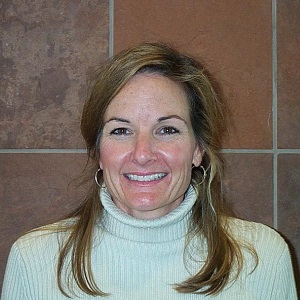
Title: Research Scientist
Department/Agency: Ecosystem Science & Sustainability
Email: schoeneckerk@usgs.gov
Phone: 970-226-9329
Research Interests: ecosystems, habitat loss & fragmentation
About: Kate Schoenecker has conducted research on ungulate ecology for 19 years for the U.S. Geological Survey and leads the Ungulate Ecology Project. She has a collaborative research program and an Affiliate Faculty position in Ecosystem Science and Sustainability at Colorado State University.
Specific Research Interests: Ungulate herbivory and habitat interactions; ungulate population dynamics and population ecology; ungulate interspecific interactions.
Melinda Smith
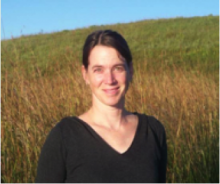
Title: Professor
Department/Agency: Biology
Email: melinda.smith@colostate.edu
Phone: 970-491-7155
Website: The Smith Lab
Research Interests: climate change, ecosystems, invasive species
About: My research focuses on understanding the consequences of human-caused global changes, especially the impacts of climatic changes, biological invasions, eutrophication (e.g., increased N deposition), and altered disturbance regimes for biodiversity and ecosystem structure and function. Within this context, my research addresses questions about the functional roles of species in ecosystems, the causes and impacts of loss and gain of genetic and species diversity, the factors that influence species coexistence and patterns of species abundance, and the relative strength of bottom-up (resources) vs. top-down (consumers) controls in structuring communities. My research employs a mixture of empirical approaches (observational, experimental, comparative and synthetic) and utilizes C4-dominated grasslands as experimentally tractable and dynamic model systems.
Research Projects
Extreme drought in grasslands experiment (EDGE)
Location: Kansas, U.S.A.
Projects Map
Location: Kansas, U.S.A.
Projects Map
Description: For the last nine years, we have compared responses of mesic (subhumid) savanna grasslands (>500 mm MAP in the tropics and >600 mm MAP outside the tropics) in North America and South Africa to alterations in both fire and grazing regimes. The long-term, comparative experiment that forms the centerpiece of this cross-continental research program is located in tallgrass prairie at the Konza Prairie Biological Station (Kansas, USA) and in knob-thorn marula savanna at the Kruger National Park (Limpopo and Mpumalanga provinces, South Africa). We refer to this study as the Konza-Kruger (K-K) Experiment.
Location: South Africa
Website: Konza-Kruger
Projects Map
Craig Starger
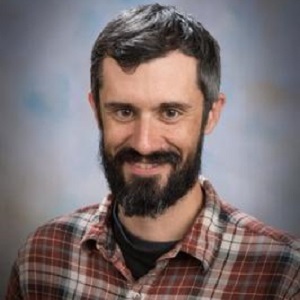
Title: Research Scientist
Department/Agency: School of Global & Environmental Sustainability
Email: craig.starger@colostate.edu
Phone: 970-491-2407
Research Interests: climate change, conservation genetics, ecosystems, policy
About: Craig Starger is a conservation biologist who works to advance science for biodiversity conservation and sustainable development. Craig has conducted extensive research on coral reef conservation biology, and has spent recent years implementing environmental policy and international development with the US government. His biology research focused on questions related to corals’ adaptive response to climate change, coral recovery, and coral population connectivity, mostly in Asia. His policy and development work focused on international fisheries and marine conservation, also mostly in Asia. Craig currently coordinates international research projects and networks for the CSU-based organization Future Earth.
Jane Stewart
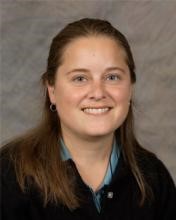
Title: Assistant Professor
Department/Agency: Bioagricultural Sciences & Pest Management
Email: jane.stewart@colostate.edu
Phone: 970-491-8770
Website: The Stewart Lab
Research Interests: climate change, ecosystems, invasive species
About: I am an Assistant Professor of Plant Pathology in the Department of Agricultural Bioagricultural Sciences and Pest Management at Colorado State University. I received her Master’s Degree in forestry from the University of Vermont and her PhD in plant pathology from Washington State University. I’ve also held postdoctoral positions at the USDA ARS Horticultural Research Lab in Corvallis, OR, and the Dept. of Plant Pathology at the University of Georgia. I have extensive experience in fungal biology and evolution, molecular diagnostics, and management of plant pathogens, including invasive and emerging pathogens.I’m also currently teaches an undergraduate class, Tree Health and Management that is focused on a broad array of diseases and their management.
Thomas Stohlgren

Title: Senior Research Scientist
Department/Agency: Natural Resource Ecology Laboratory
Email: thomas.stohlgren@colostate.edu
Phone: 970-491-1980
Research Interests: invasive species
About: Tom Stohlgren, Ph.D., is a Senior Research Scientist at the Natural Resource Ecology Laboratory, where he has held an Affiliate Faculty position since 1991. Tom is recognized as one of the top ten most productive scientists in the world in the field of biological invasions. He has published over 200 scientific papers and a textbook on methods of assessing plant diversity. He received a Bachelor’s degree in Forestry from the University of California, Berkeley; Master’s degree in Biology from California State University, Fresno; and, Ph.D. in Ecology from the University of California, Davis. Tom enjoyed for the U.S. Geological Survey, Fort Collins Science Center, and the Department of the Interior for 35 years. Stohlgren has won several national awards including two Partners in Conservation Awards, and the Meritorious Service Award. He teaches graduate classes on philosophy of science, invasion ecology, and technical writing. Because of his expertise on biological invasions, he is invited around the globe to lecture on harmful invasive plants, animals, and diseases. He also directs the National Institute of Invasive Species Science and dreams of developing a new center for Modeling Species Distributions and Ecological Forecasting.
Specific Research Interests: 1. Saving the world from harmful invasive plants, animals, and diseases. 2. Forecasting invasions. 3. Developing new education and outreach tools to translate and communicate our science.
Diana Wall

Title: Distinguished Professor
Department/Agency: School of Global & Environmental Sustainability
Email: diana.wall@colostate.edu
Phone: 970-491-2504
Website: The Soil Lab
Research Interests: climate change, ecosystems, endangered species, landscape ecology, policy
About: A soil ecologist and environmental scientist, Diana Wall is actively engaged in research exploring how life in soil (microbial and invertebrate diversity) contributes to healthy, fertile and productive soils and thus to society, and the consequences of human activities on soil globally. Her research on soil biota, particularly soil nematodes, extends from agroecosystems to arid ecosystems. Diana has spent more than 25 seasons in the Antarctic Dry Valleys examining how global changes impact soil biodiversity, ecosystem processes and ecosystem services. She currently serves as Science Chair for the Global Soil Biodiversity Initiative. She has also served as President of the Ecological Society of America, the American Institute of Biological Sciences, and the Society of Nematologists. She is a recipient of many awards recognizing her research including the 2015 Ulysses Medal from the University College Dublin, the 2013 Tyler Prize for Environmental Achievement, the SCAR President’s Medal for Excellence in Antarctic Research and the Soil Science Society of America Presidential Award. Wall Valley, Antarctica was named in 2004 to recognize her research contributions. She is a Fellow of the American Association for the Advancement of Science, the Ecological Society and holds an Honorary Doctorate from Utrecht University, The Netherlands. She received a B.A. and Ph.D. at the University of Kentucky, Lexington.
Research Projects
McMurdo Dry Valleys long-term ecological research program
Description: In the Antarctic Dry Valleys, climate warming may result in an increase of warm summers that may lead to transient pulse events of high summer melt-flows. The Wall lab’s research examines contemporary patterns in ecological connectivity across the valleys such as the distribution, abundance and demographics of soil invertebrate species in response to changing environmental conditions. The McMurdo Dry Valleys Long-Term Ecological Research Program is an inter- and multidisciplinary study. MCM joined the National Science Foundation’s LTER Network in 1993 and is funded through the Office of Polar Programs, and studies both aquatic and terrestrial ecosystems.
Location: Antarctica
Citations: Lyons, W B, K Deuerling, K A Welch, S A Welch, G Michalski, W W Walters, U Nielsen, D H Wall, I Hogg, and B J Adams. “The Soil Geochemistry in the Beardmore Glacier Region, Antarctica: Implications for Terrestrial Ecosystem History.” Nature Scientific Reports, May 7, 2016, 1–8. dos:10.1038/srep26189.
Knox, M.A., D.H. Wall, R.A. Virginia, M.L. Vandegehuchte, I. San Gil and B. J. Adams. 2015. Impact of diurnal freeze-thaw cycles on the soil nematode Scottnema lindsayae in Taylor Valley, Antarctica. Polar Biology.DOI 10.1007/s00300-015-1809-6
Nielsen, U.N. and D.H. Wall. 2013. The future of soil invertebrate communities in Polar Regions: different climate change responses in the Arctic and Antarctic, Ecology Letters. doi: 10.1111/ele.12058
Nielsen, U.N., D.H. Wall, B.J. Adams, R.A. Virginia, B.A. Ball, M.N. Gooseff and D.M. McKnight. 2012. The ecology of pulse events: insights from an extreme climatic event in a polar desert ecosystem. Ecosphere. 3(2) 17
Ayres, E., J.N. Nkem, D.H. Wall, B.J. Adams, J.E. Barrett, E.J. Broos, A.N. Parsons, L.E. Powers, B.L. Simmons and R.A. Virginia. 2008. Effects of human trampling on populations of soil fauna in the McMurdo Dry Valleys, Antarctica. Conservation Biology 22:1544-1551
Barrett, J.E., R.A. Virginia, D.H. Wall, and B.J. Adams. 2008. Decline of a dominant invertebrate species contributes to altered carbon cycling in low diversity soil ecosystem. Global Change Biology 14:1734-1744
Barrett, J.E., R.A. Virginia, D.H. Wall, P.T. Doran, A.G. Fountain, K.A. Welch and W.B. Lyons. 2008. Persistent effects of a discrete warming event on a polar desert ecosystem. Global Change Biology 14:2249-2261. doi:10.1111/j.1365-2486.2008.01641.x
Wall, D.H. 2007. Global Change tipping points: Above- and below-ground biotic interactions in a low diversity ecosystem. Philosophical Transactions of the Royal Society B, Biological Sciences, 362:2291-2306. doi: 10.1098/rstb.2006.1950
Adams, B.J., D.H. Wall, U. Gozel and I.D. Hogg. 2006. The southernmost worm, Scottnema lindsayae (Nematoda): diversity, dispersal and ecological stability. Polar Biology. doi: 10.1007/s00300- 006-0241-3
Website: McMurdo Project
Projects Map
Description: Net primary productivity is the sum of aboveground net primary production (ANPP; e.g., leaves) and the less frequently studied belowground net primary productivity (BNPP; e.g., roots). Understanding of BNPP is a key process in terrestrial ecosystem functioning because in most water-limited ecosystems, BNPP accounts for a larger flow of carbon than ANPP. Ecological interactions are also likely to play a role in BNPP since plant roots are consumed by animals such as herbivorous nematodes, which are in turn preyed upon by predatory nematodes. The objective of this study is to explain the differential effects of changes in water availability on BNPP and the ecological mechanisms behind those patterns.
Location: Colorado & Kansas, U.S.A.
Website: Grassland Project
Projects Map
Colleen Webb
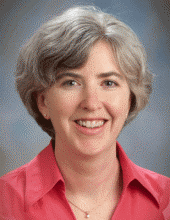
Title: Professor
Department/Agency: Biology
Email: colleen.webb@colostate.edu
Phone: 970-491-4289
Website: The Webb Lab
Research Interests: ecosystems, policy
About: Theoretical evolutionary ecology, trait-based approaches, disease ecology, species interactions, resilience, coevolution, quantitative genetics, nonlinear dynamics, spatial models. EDUCATION Ph.D. in Ecology and Evolutionary Biology with Statistics minor (equivalent to M.S.), “A Classification of Darwinian Extinction,” Cornell University, Ithaca, NY, Alexey Kondrashov, Advisor, 2001. M.S. in Biology, University of Oregon, Eugene, OR, 1994. B.S. in Applied Mathematics (application in Chemistry), University of Chicago, Chicago, IL, 1993. PROFESSIONAL EXPERIENCE Associate Professor, Department of Biology (joint appointment in Mathematics), Colorado State University, Fort Collins, CO, 2009 – present. Assistant Professor, Department of Biology (joint appointment in Mathematics), Colorado State University, Fort Collins, CO, 2003-2009. Member, Graduate Degree Program in Ecology, Colorado State University, 2012-2014. Sabbatical Fellow, The German Center for Integrative Biodiversity Research, Leipzig, Germany 2013-2014 Sabbatical Visitor, Max Plank Institute for Biogeochemistry, Jena, Germany 2013-2014 External Professor, The Santa Fe Institute, Santa Fe, NM, 2004 – 2010. Guest Researcher, Center for Disease Control, Fort Collins, CO, 2008-2011. Faculty Member, Graduate Degree Program in Ecology, Colorado State University, Fort Collins, CO, 2003 – present Affiliate Faculty Member, Biomedical Engineering Program, Colorado State University, Fort Collins, CO, 2004 – present Postdoctoral Research Associate, “Robustness in Ecosystems,” Department of Ecology and Evolutionary Biology, Princeton University, Princeton, NJ (with Simon Levin) and The Santa Fe Institute, Santa Fe, NM, 2001 – 2003. Assistant Editor, University of Chicago Math Education Program (secondary school textbooks), Chicago, IL, 1993.
Specific Research Interests: In the Webb lab, we study how the interplay between ecological and evolutionary mechanisms affects the dynamics and persistence of ecological systems. One facet of this research addresses the evolution of ecological interactions. Because ecological and evolutionary processes are stereotypically viewed as acting on different time scales, they are often studied in isolation from one another. However, these processes interact, and our research focuses on the mechanisms and implications of evolution in traits that structure ecological interactions. A second facet of our research addresses how the evolution of ecological interactions scales up to affect higher levels of organization. Natural selection acts primarily at the level of the individual, but when such selection impacts ecological interactions, it can indirectly affect higher organizational levels such as interacting species, ecological communities or ecosystems. Many of our projects incorporate the effects of anthropogenic change in complex ecological systems with implications for concomitant impacts on human society. In pursuing this broad research program, we work on projects that are united conceptually by the interplay between ecological and evolutionary dynamics and the scaling of individual traits to higher levels of ecological organization. Check out our research projects for more details, but examples of general questions we are currently addressing include: What do trait-based approaches tell us about community and ecosystem level response to environmental change? What mechanisms affect the dynamics of disease prevalence in highly virulent diseases? How does the spatial distribution of organisms impact their response to disturbances? Our work is driven by the biological question, but we use a variety of quantitative techniques (i.e., dynamical systems, simulation, Bayesian hierarchical modeling, applied statistics) and have the flexibility to develop data-driven, quantitative approaches customized to the biological problem.
Research Projects
U.S. animal movement and disease outbreak simulation
Description: Little detail is known about how cattle move across the US, making prediction of disease spread in the US domestic animal herd difficult. We are developing a database of cattle movement for the US and are using this to generate a network model of disease spread in US cattle based on movement data.
Location: United States
Citations: Buhnerkempe MG, Tildesley MJ, Lindström T, Grear DA, Portacci K, et al. (2014) The Impact of Movements and Animal Density on Continental Scale Cattle Disease Outbreaks in the United States. PLoS ONE 9(3): e91724. doi:10.1371/journal.pone.0091724.
Grear, D.A., Kaneene, J.B., Averill, J.J., Webb, C.T. 2014. Local cattle movments in response to ongoing bovine tuberculosis zonation and regulations in Michigan, USA. Preventative Veterinary Medicine. 114(3-4):201-12. doi: 10.1016/j.prevetmed.2014.03.008.
Tsao, K., Robbe-Austerman, S., Miller, R.S., Portacci, K., Grear, D.A., Webb, C. 2014. Sources of bovine tuberculosis in the United States. Infection, Genetics and Evolution. 28C:137-143. doi: 10.1016/j.meegid.2014.09.025.
*Buhnerkempe, M.G., Grear, D.A., Portacci, K., Miller, R.S., Lombard, J., Webb, C.T. 2013. A national-scale picture of U.S. cattle movements obtained from Interstate Certificate of Veterinary Inspection data. Prev. Vet. Med.112: 318-329.
Lindstrom, T., Grear, D.A., Buhnerkempe, M., Webb, C.T., Miller, R.S., Portacci, K., Wennergren, U. 2013. A Bayesian approach for modeling cattle movements in the United States: scaling up a partially observed network. PLoS ONE. DOI: 10.1731/journal.pone.0053432.
Projects Map
Traits-based approaches for community and ecosystem ecology
Description: Global change is intensifying efforts to predict how species composition will respond to environmental change and modify ecosystem function. Trait-based approaches are receiving considerable attention as they potentially provide badly needed improvements in prediction for community composition and ecosystem function. However, realization of this potential requires statistical and modeling tools that are in their infancy. We worked with colleagues to describe how the conceptual foundation of traits-based approaches in ecology can be used to develop and critically evaluate appropriate methods for analyzing trait data.
Location: Colorado & Kansas, U.S.A.
Citations: Lewis, D.L., Breck, S.W., Wilson, K.W. and Webb, C.T. 2014. Modeling black bear population dynamics in a human-dominated stochastic environment. Ecological Modelling. 294: 51–58. DOI: 10.1016/j.ecolmodel.2014.08.021.
Restif O, Hayman DTS, Pulliam JRC, Plowright RK, George DB, Luis AD, Bowen RA, Fooks AR, O’Shea TJ, Wood JLN, Webb CT. 2012. Model-guided fieldwork: practical guidelines for multi-disciplinary research on wildlife ecological and epidemiological dynamics. Ecology Letters 15: 1083-1094.
Webb, C.T., Hoeting, J.A., Ames, G.M., Pyne, M.I., Poff, N.L. 2010. A structured and dynamic framework to advance traits-based theory and prediction in ecology. Ecology Letters 13: 267-283.
Projects Map
George Wittemyer
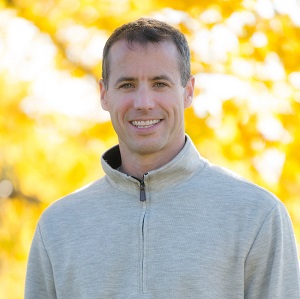
Title: Associate Professor
Department/Agency: Fish, Wildlife, & Conservation Biology
Email: g.wittemyer@colostate.edu
Phone: 970-491-4289
Website: The Wittemyer Lab
Research Interests: endangered species, habitat loss & fragmentation, landscape ecology, policy
About: I work to develop solutions to biodiversity conservation issues, aimed at ameliorating human impacts to at risk wildlife populations. My group focuses on determining how landscape, human, and climate impact demography, distribution, behavior and movement of at risk wildlife populations. We work to actively translate our research into policy actions. I serve as the Chair of the Scientific Board of Save the Elephants, a technical advisor on elephants to the Kenya Wildlife Service and on IUCN’s African Elephants Specialist Group.
Specific Research Interests: Large Mammal Conservation
Research Projects
Long term monitoring of Samburu elephant population
Location: Kenya
Projects Map
Ellen Wohl
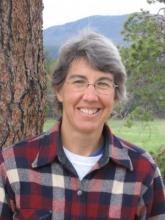
Title: Professor
Department/Agency: Geosciences
Email: ellen.wohl@colostate.edu
Phone: 970-491-5298
Research Interests: ecosystems, habitat loss & fragmentation
About: I did my BS and PhD degrees in geosciences at Arizona State University and the University of Arizona, respectively. I have been on the faculty at CSU since 1989. In addition to publishing in peer-reviewed journals, I enjoy writing for non-scientific audiences. Books thus far include Virtual Rivers (2001), Disconnected Rivers (2004), Island of Grass (2009), Of Rock and Rivers (2009), A World of Rivers (2011), Wide Rivers Crossed (2013), and Transient Landscapes (in press).
Specific Research Interests: My research focuses on physical process and form in rivers, and how these interact with aquatic, riparian, and human communities. Much of my research is conducted on mountain rivers in the Colorado Front Range, but I have done field work on every continent but Antarctica. At present, my students and I are especially focusing on how instream wood, beavers, and channel-floodplain connectivity influence stream metabolism and organic carbon storage.
Research Projects
Description: Streams occupy a small part of Earth’s surface, but are disproportionately important for element transport and processing and for maintaining global biodiversity. Large wood strongly influences stream form and function, and channel-spanning structures such as logjams: 1) modify stream channel hydrology and geomorphology; 2) increase retention of sediment and organic matter; and 3) alter nutrient cycling. Logjams create biogeochemical hotspots in headwater streams, increasing stream metabolism and animal production. Human reductions in stream wood loads and logjams are pervasive in forested ecosystems around the world, creating “dam-impoverished” systems with limited capacity for organic matter storage and related ecosystem processes. A prime example is streams of the southern Rocky Mountains, where a legacy of wood removal has greatly reduced the size and along-stream frequency of jams.This project asks: Does the loss of jams reduce the productive capacity of headwater stream networks? and hypothesizes that the loss of jams makes streams more leaky of organic matter with subsequent decreased animal production, decreased in situ biogeochemical processing, and increased elemental export downstream. Our primary objectives are to: (i) quantify differences in logjams (along-stream spacing, size, hydraulic retention) on streams with different management histories, (ii) quantify biogeochemical processes (nutrient removal, storage and export, and ecosystem metabolism) and stream animal response (composition, secondary production) occurring in jams and in adjacent stream segments without jams, and (iii) examine the implications of reduced frequency of jams by scaling the site-specific measurements of biogeochemistry and stream animal response to entire watersheds. This will allow us to examine legacy effects on ecosystem processes by examining differences in logjams and jam-associated processes across a gradient of stream management, to link physical habitat to animal conservation and ecosystem function, and to provide the first landscape-scale assessment of the effects of jam removal on stream processes. Streams in and around Rocky Mountain National Park, Colorado drain large (>20 km2) patches of old-growth forests, unmanaged younger forests, and managed forests, providing a unique opportunity to compare characteristics of jams and their associated ecosystem functions in relation to forest age and management history.
Location: Colorado & Wyoming, U.S.A.
Projects Map
Support the GBC
To financially support us, email us at globalbiodiversitycenter at gmail dot com. We can accept checks payable to Colorado State University and with ‘unrestricted gift’ written in the memo line.